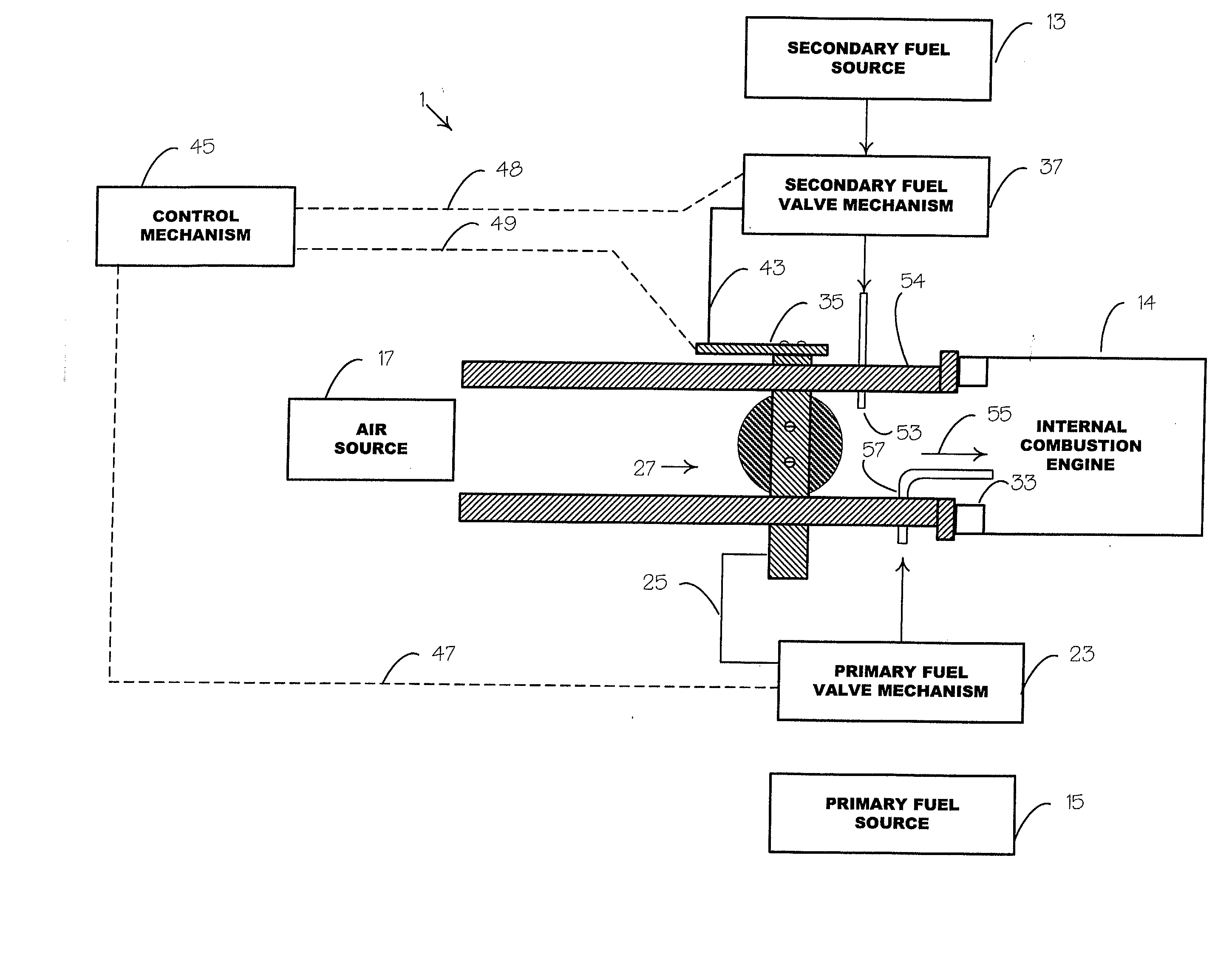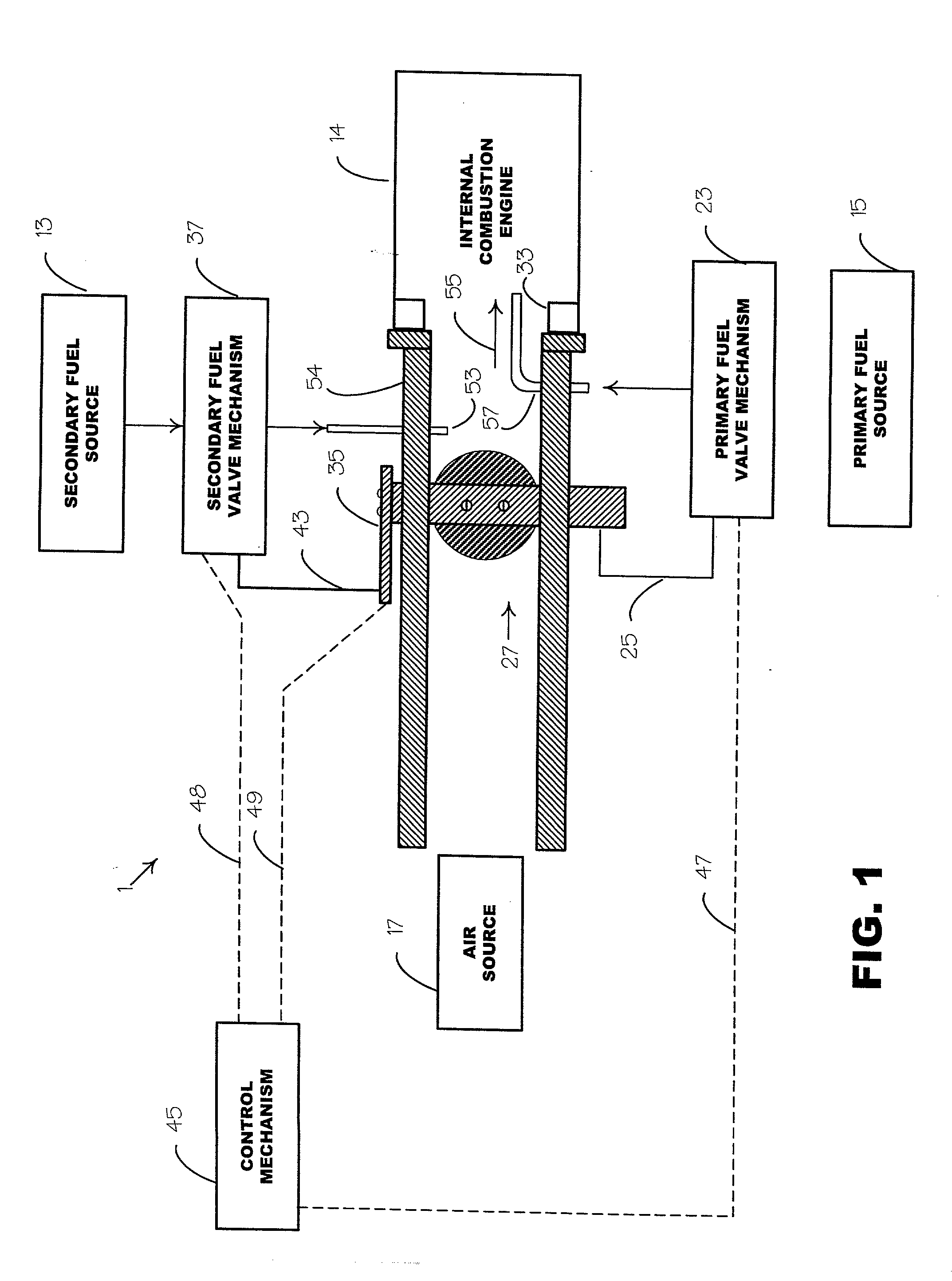Internal combustion system adapted for use of a dual fuel composition including acetylene
- Summary
- Abstract
- Description
- Claims
- Application Information
AI Technical Summary
Benefits of technology
Problems solved by technology
Method used
Image
Examples
example
[0036] Tests were run using a single cylinder, overhead-valve internal combustion, Briggs & Stratton engine. The method of fuel introduction was by a dual fuel, constant flow, port type fuel injection arrangement, as schematically shown in FIG. 1. Pure acetylene, C.sub.2H.sub.2, was used as the primary fuel 15 and methyl alcohol, CH.sub.4O, was used as the secondary fuel 13. The source for the acetylene 15 was a standard cylinder, as customarily used for welding purposes, with the primary fuel valve mechanism 23 comprising a standard pressure regulator. The regulator 23 was adjusted to provide the acetylene at fifteen p.s.i.g. A standard back-flow check valve was provided at the injection port 57.
[0037] The methyl alcohol 13, which has a gross energy producing capability of 10,259 BTU / lb., was injected into the engine manifold 54 at a relatively low rate that, upon introduction of the primary fuel 15, would avoid early ignition and knock thereof. The rate at which the secondary fuel...
PUM
 Login to View More
Login to View More Abstract
Description
Claims
Application Information
 Login to View More
Login to View More - R&D
- Intellectual Property
- Life Sciences
- Materials
- Tech Scout
- Unparalleled Data Quality
- Higher Quality Content
- 60% Fewer Hallucinations
Browse by: Latest US Patents, China's latest patents, Technical Efficacy Thesaurus, Application Domain, Technology Topic, Popular Technical Reports.
© 2025 PatSnap. All rights reserved.Legal|Privacy policy|Modern Slavery Act Transparency Statement|Sitemap|About US| Contact US: help@patsnap.com


